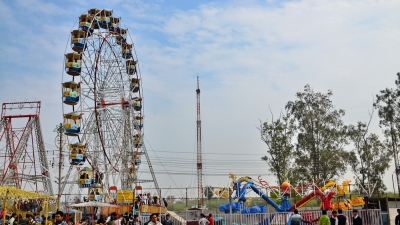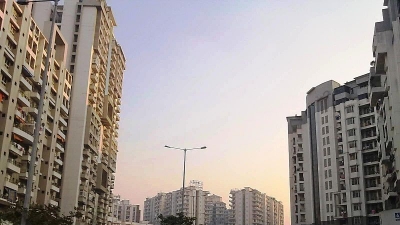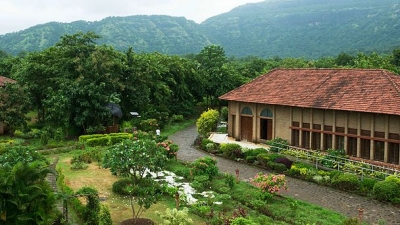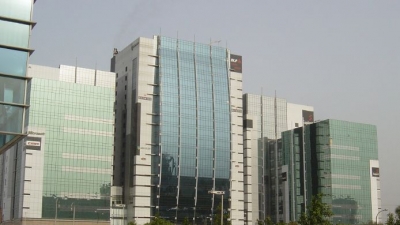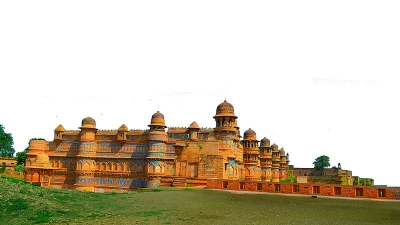Fatehpur Sikri Attractions - Tourist Places To Visit In Fatehpur Sikri
-
01Buland Darwaza
+ Read MoreThe Buland Darwaza or Great Gate was initially built in the early part of the 17th century to commemorate Emperor Akbar’s victory over Gujarat. The elaborate stone structure is influenced by typical Persian-Mughal designs. This 15-storeyed high gateway is at the southern entrance of the city of Fatehpur Sikri. A Persian inscription on the Buland Darwaza records Akbar's conquest over Gujarat in the year 1601.
The Persian inscription of the gate signifies the open mindset of Akbar and is often used as an example by historians to show the importance of diverse traditions and culture. The wide, solid sandstone structure resembles a large tomb with doors on all sides. Several visitors come here to experience the peaceful view and study the beautiful art on the walls.
The Buland Darwaza is constructed of red and buff sandstone and has white and black marble carvings in the interiors. The structure has a symmetrical plan, stylised battlement and is topped by pillars and chhatris.
-
02Birbal Palace
 + Read More
+ Read MoreBirbal’s Palace in Fatehpur Sikri is considered to be one of the prime palaces of the Mughal era. According to history, the palace was also used as the residence of King Akbar’s senior queens—Ruqayya Begum and Salima Sultan Begum.
The palace is unique because it boasts of both Hindu and Mughal architectural influences. In a way, it represented the merge of two cultures—a fact which is evident in the colour, shape and carvings inside and outside the palace. Birbal was respected for his great wit and was often relied upon during entertainment programmes.
Birbal’s Palace is also known as Northern Palace of the Haram Sara and is an integral part of the Imperial Harem in Fatehpur Sikri.
-
03Tomb of Salim Chishti
+ Read MoreThe Tomb of Sheikh Salim Chishti is a beautiful and magnificent structure built in the early 16th century. The famous Mughal emperor Akbar built this tomb as a tribute to the Sufi saint Salim Chishti, who had forecasted that he would have a son. Akbar had been praying for a son for a long time and had almost given hope. The saint’s blessings came true and Akbar was blessed with a son soon after.
The elaborate white structure is a marvel and even today it attracts people from all walks of life, cutting across all religions and beliefs. This beautiful square marble tomb exemplifies the best of Mughal architecture in India. The tomb is situated near Zanana Rauza and faces the Buland Darwaza. The mausoleum is built on a raised platform and it takes a flight of five steps to reach the entrance of the porch. The tomb itself is placed at the centre of the main hall which features a single semicircular dome.
-
04Ibadat Khana
 + Read More
+ Read MoreThe Ibadat Khana or House of Worship was a prayer or a meeting room built by Akbar at his palace in Fatehpur Sikri. Originally he intended the place to be only for Sunni Muslims to gather and discuss various issues. However, when petty differences between other religious sects and followers got out of control he decided to open the room to people of all faiths.
Locals and visitors to the city were often invited to participate in debates and discussions in this room. Religious leaders and philosophers from his empire and those who were passing through were encouraged to come to the discussions on Thursday evenings.
Perturbed by the differences of the religious leaders and philosophers, Akbar attempted to bring about a reconciliation by creating a new faith, the Din-i-Ilahi or Faith of the Divine. This was a laudable effort but found few takers amongst the masses though some elite belonging to Akbar’s court subscribed to it.
-
05Panch Mahal
+ Read MoreThe Panch Mahal is an elaborate, columnar five-storey structure built as a pleasure palace of sorts by King Akbar. He used it to relax and unwind and for entertainment purposes. The palace has an open-sided theme wherein each floor is smaller than the last and every floor is held up by asymmetrical pillars.
The palace was also specially planned to cater to the emperor’s queens and princess. A special screen was installed to act as a purdah for the women watching shows from inside. The palace lies close to the Anup Talao which was a beautiful and one-of-a-kind water tank built by King Akbar for water storage and distribution purposes.
-
06Anup Talao
+ Read MoreThe Anup Talao is a magnificent, one-of-its kind water tank built in front of Akbar’s private quarters. It is situated in front of the Khwabgah complex and was the most impressive tanks of its times. The red sandstone structure has a beautiful platform and well-planned viewing and seating places around it. The structure is connected by mini causeways by all four sides. In the old days, it was specially connected to the main water system to ensure a regular flow of fresh water into it.
As per old texts and records, it is claimed that the tank was filled with several silver and gold coins that shimmered when the sun rays hit them. Most of these coins were later given away in charity by Jehangir. In fact, the emperor had mentioned in his memoirs that he had distributed one crore and three lakhs coins that were emptied out of the tank for the purposes of charity.
-
07Hujra-i-Anup Talao
 + Read More
+ Read MoreThe Hujra-i-Anup Talao is a small section or building, which was earlier considered to be the main residence of Akbar’s wife. However, due to the small size of the premises it is not clear among historians whether she really stayed there or not.
-
08Pachisi Court
 + Read More
+ Read MorePachisi literally refers to a game much like chess. The Pachisi Court in Fatehpur Sikri was built close to the Diwan-i-Am. The ground of the courtyard resembles an actual chess board because it is made in a combination of black and white squares. In the old days the emperor used to play a game much like chess with the only difference that he used actual humans for the game.
The vast courtyard is frequently visited by tourists and historians alike to understand the social culture and life of Mughals better.
-
09Naubat Khana
 + Read More
+ Read MoreThe Naubat Khana is a Mughal-style drum house that was often built in the ancient days to perform in or play the shehnai and drums. The extravagant structure had rich carvings that were typical of Mughal art and culture.
There are several such structures around India with the one in Fatehpur Sikri believed to be built during the Mughal emperor for ceremonies and functions.
Naubat Khana, in Fatehpur Sikri, is situated at the entrance of the palace area. The music here was played five times a day at the appointed hours. The three-storey rectangular building has a Hathi Pol or elephant gate where visitors had to dismount before entering the building. The interior boasts beautiful carved designs on the red stone walls.
-
10Mariam-Uz-Zamani Palace
 + Read More
+ Read MoreLocated within the main fort complex of Fatehpur Sikri, the Mariam-uz-Zamani Palace is a lovely Mughal themed palace that was the home of Akbar’s wife—Jodha Bai. It was the seat of power during both Akbar and his son’s Jehangir’s reign.
Another belief goes that the palace was also known as Turkish Sultana’s House because it served as the residence to his wife, Mariam-uz-Zamani. However, this is disputed due to the small size.
The palace was famous for its luxurious decors and ancestral architecture. Akbar spent a lot of money and hired the best of workers to build the structure. The surrounding gardens and carvings all over the building add to the beauty and magnificence of the building. Both the exterior and interior feature ornamental relief of geometrical and floral designs and finishes.



 Click it and Unblock the Notifications
Click it and Unblock the Notifications




